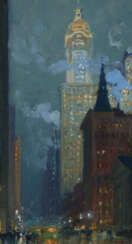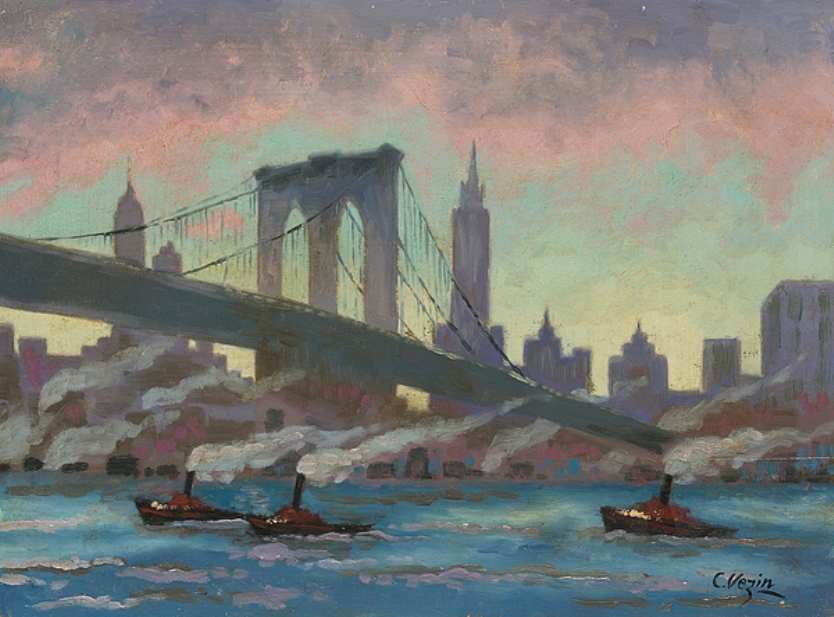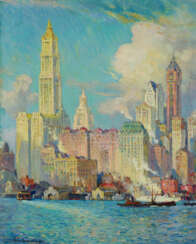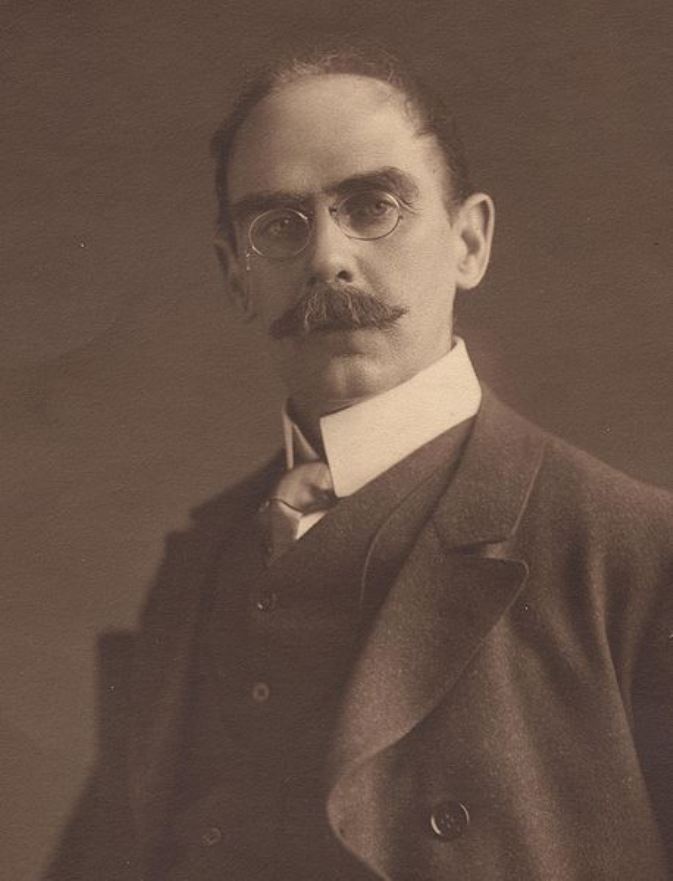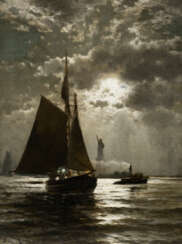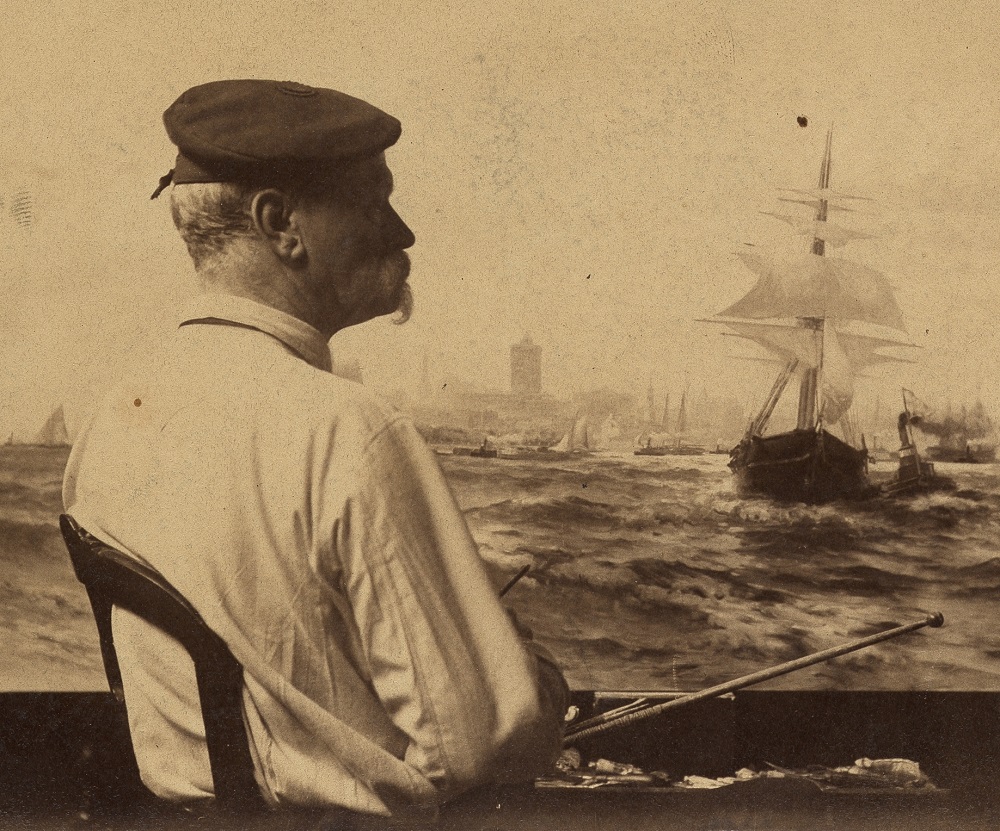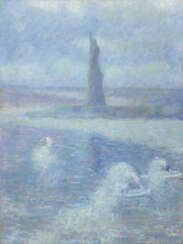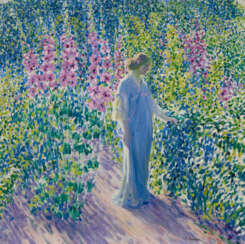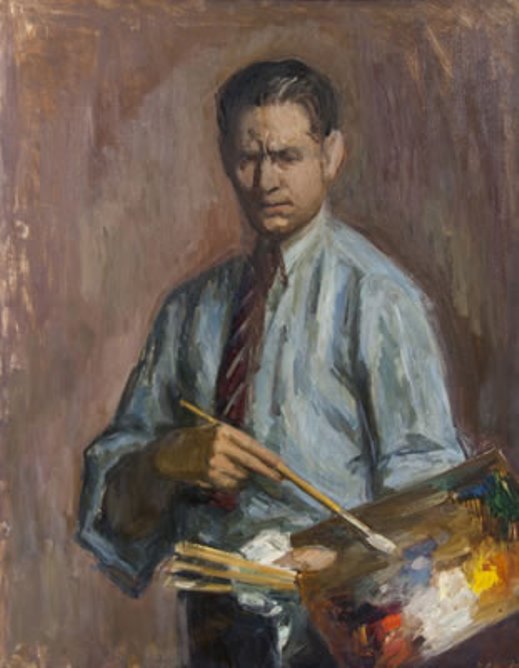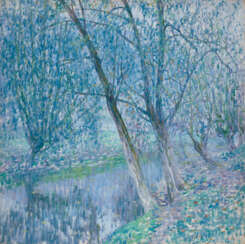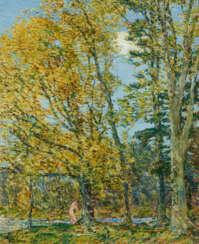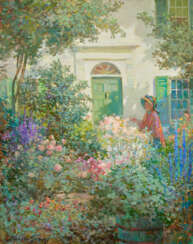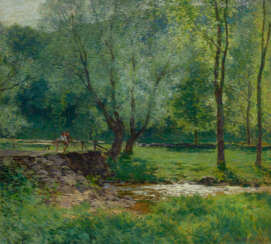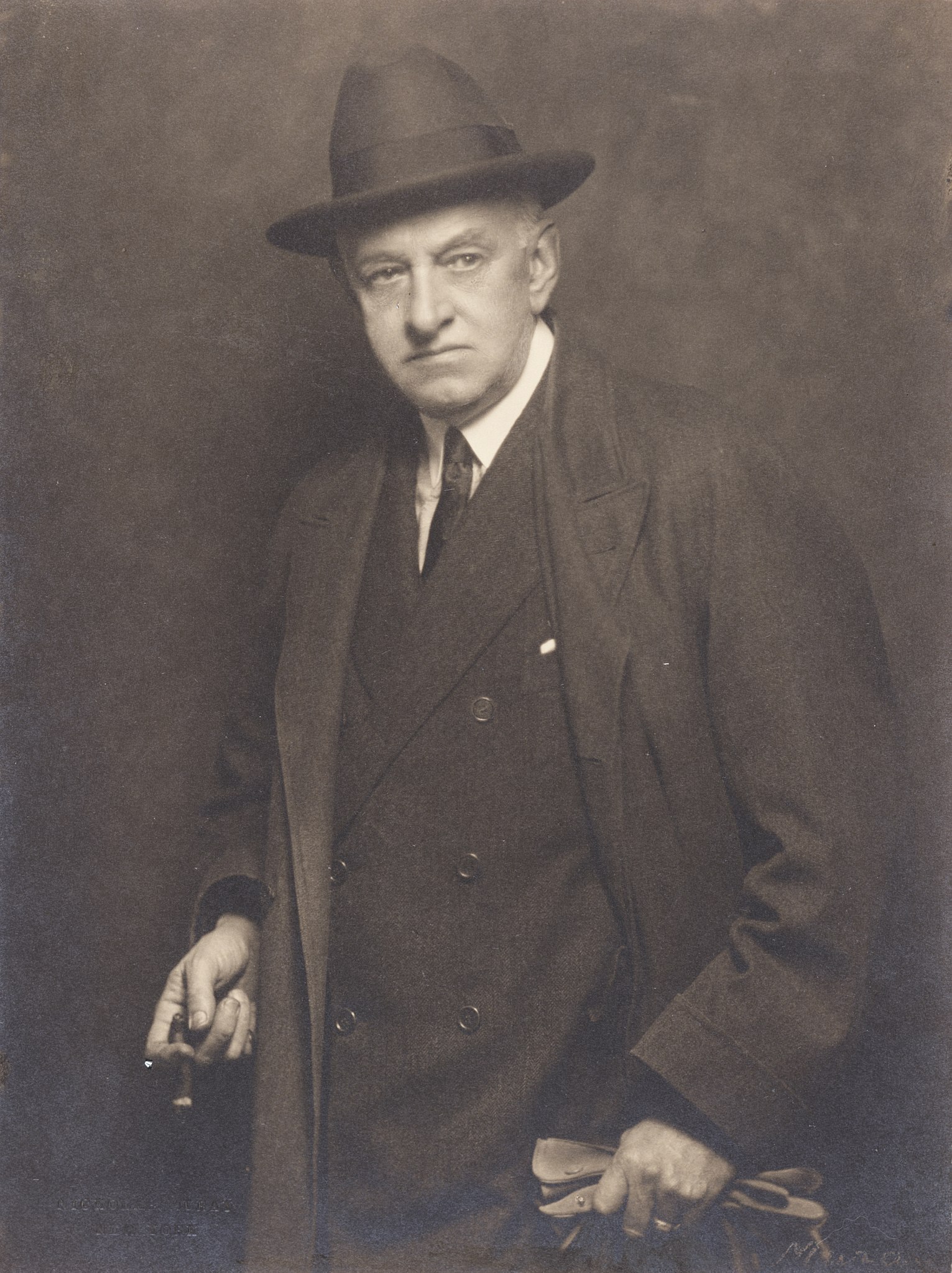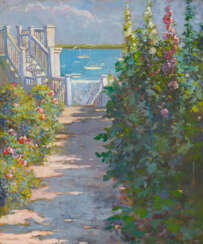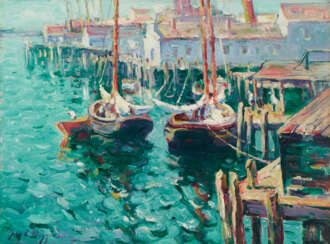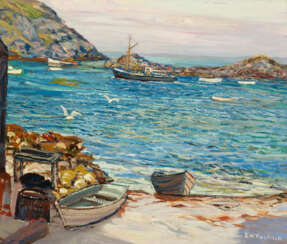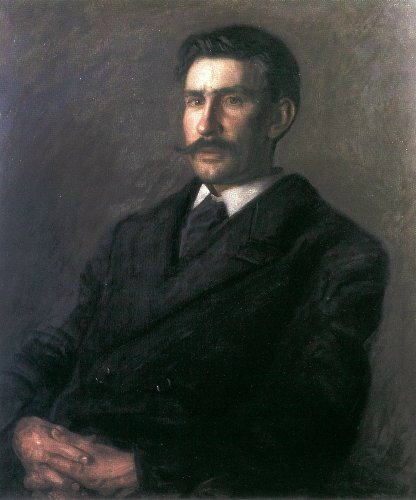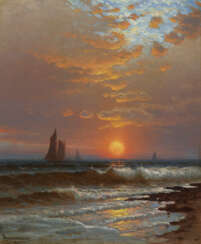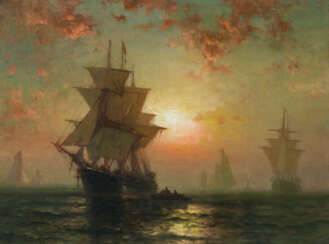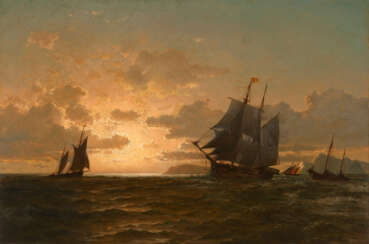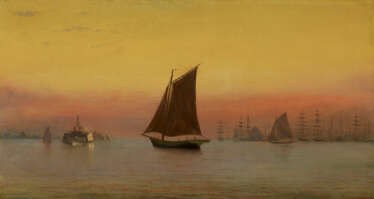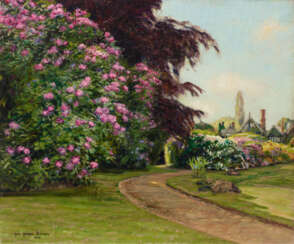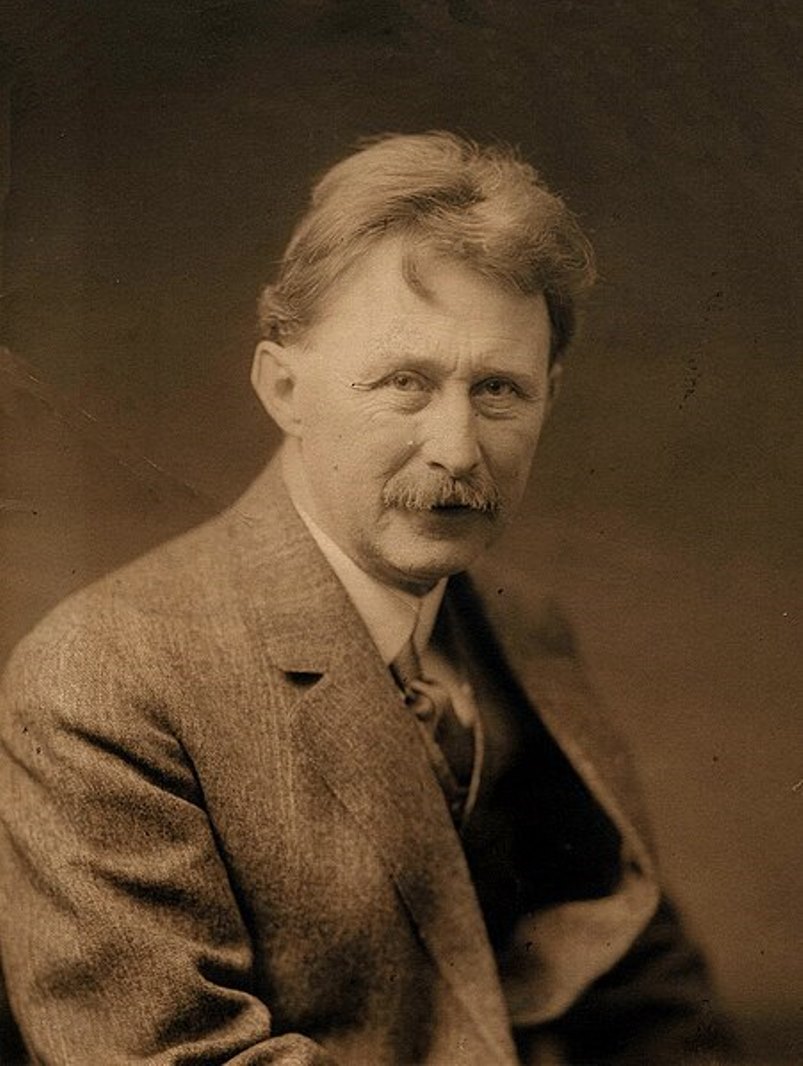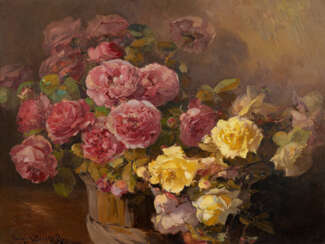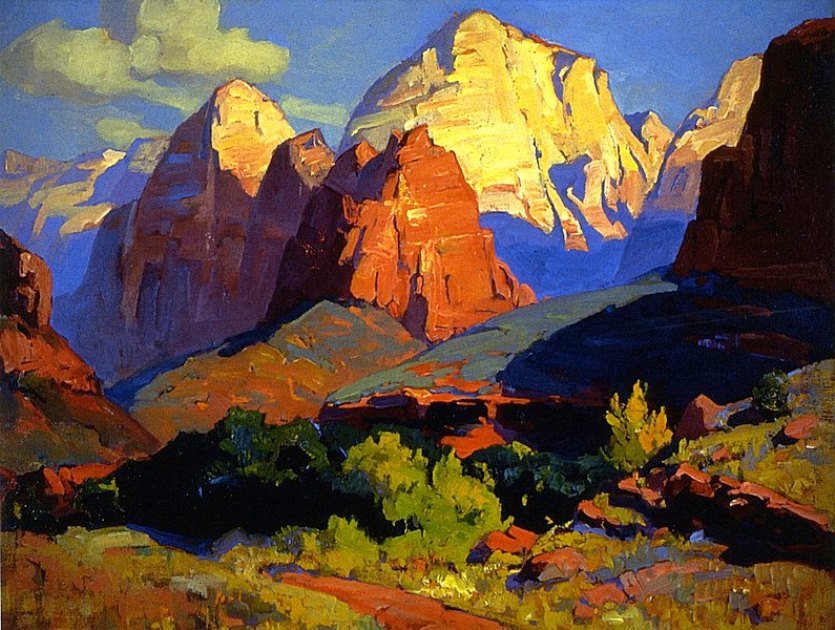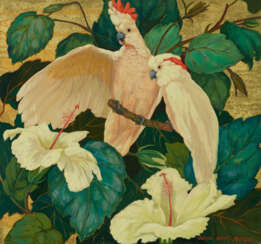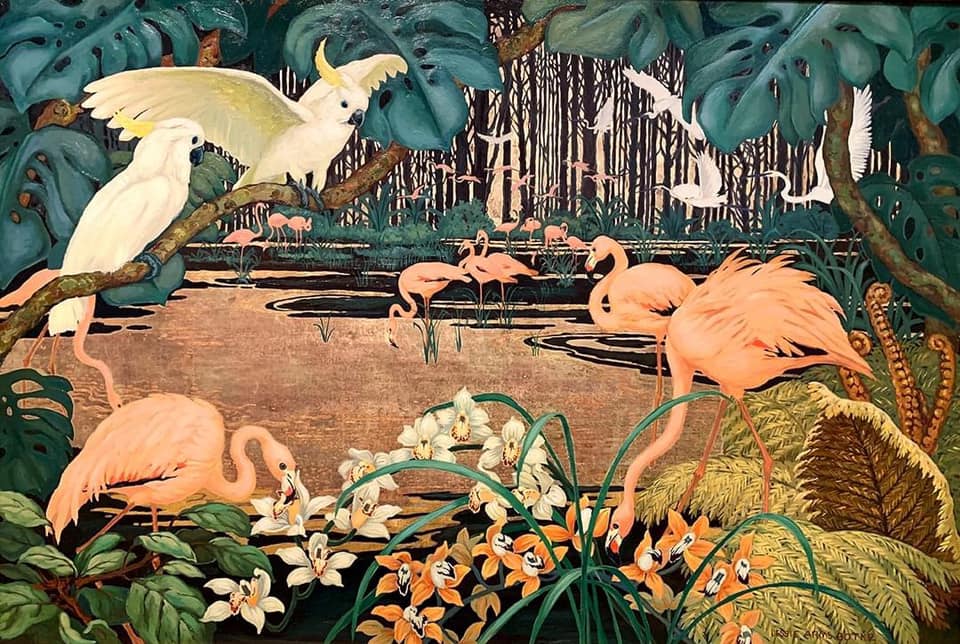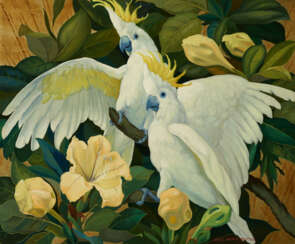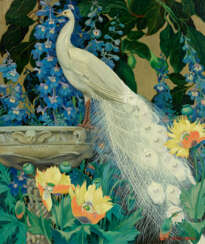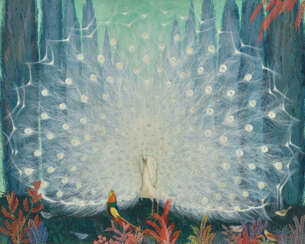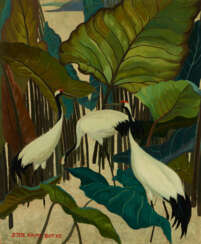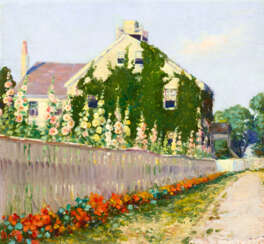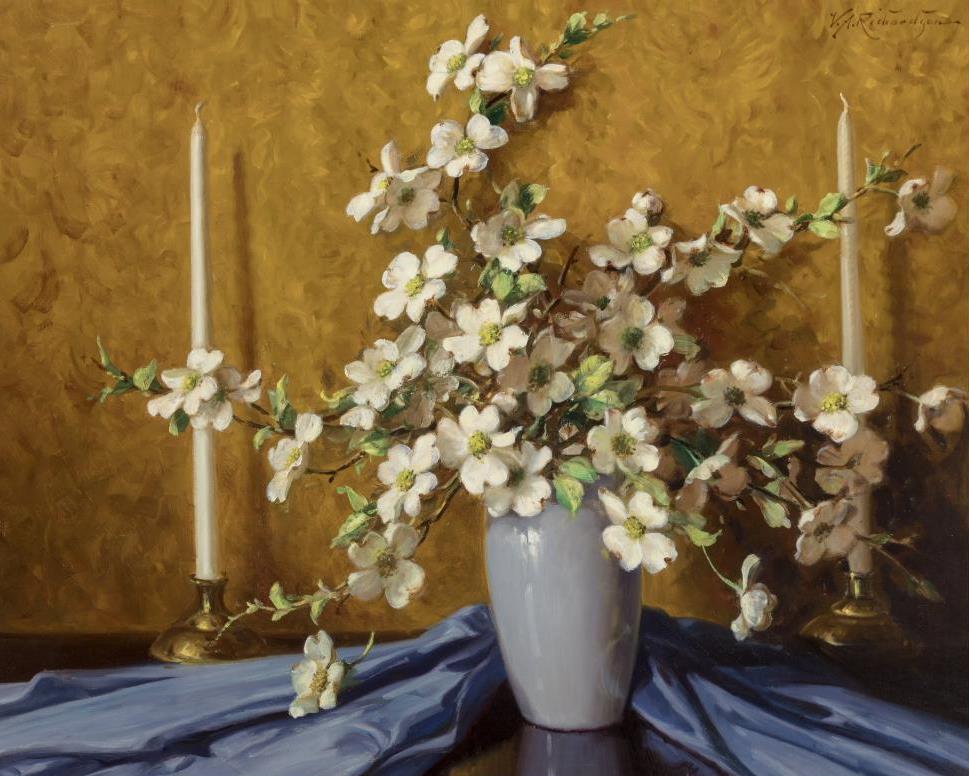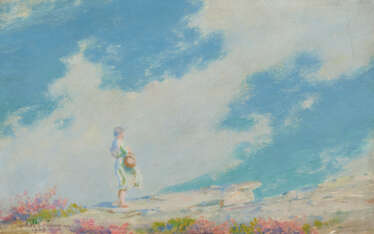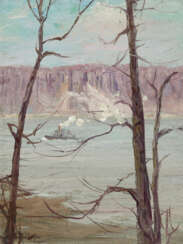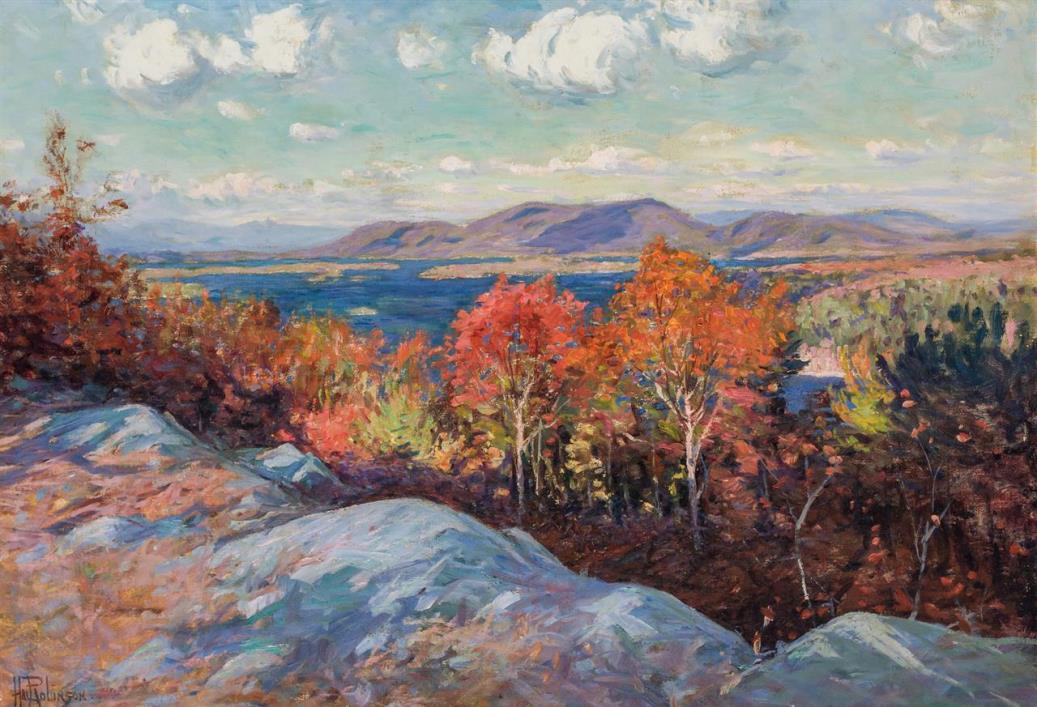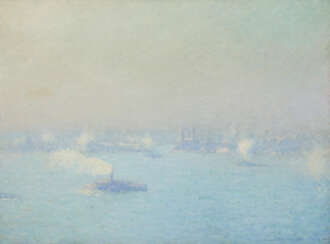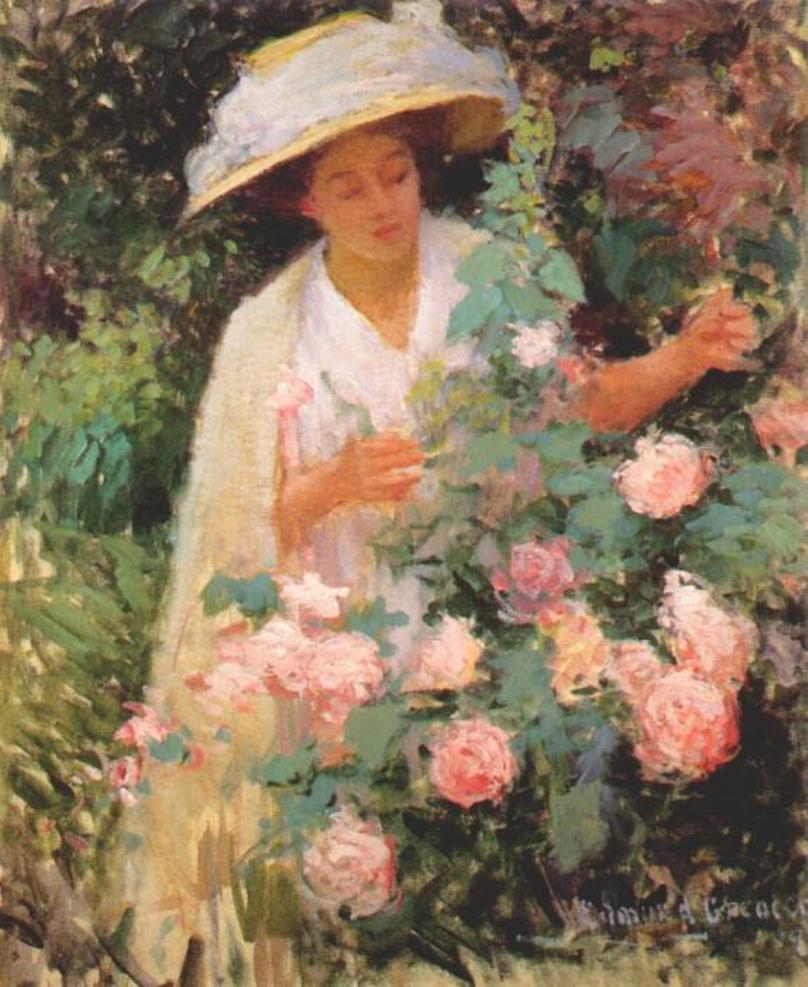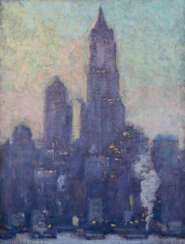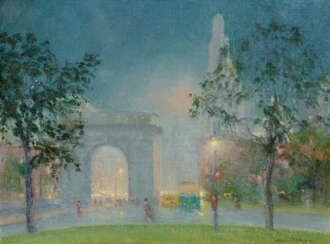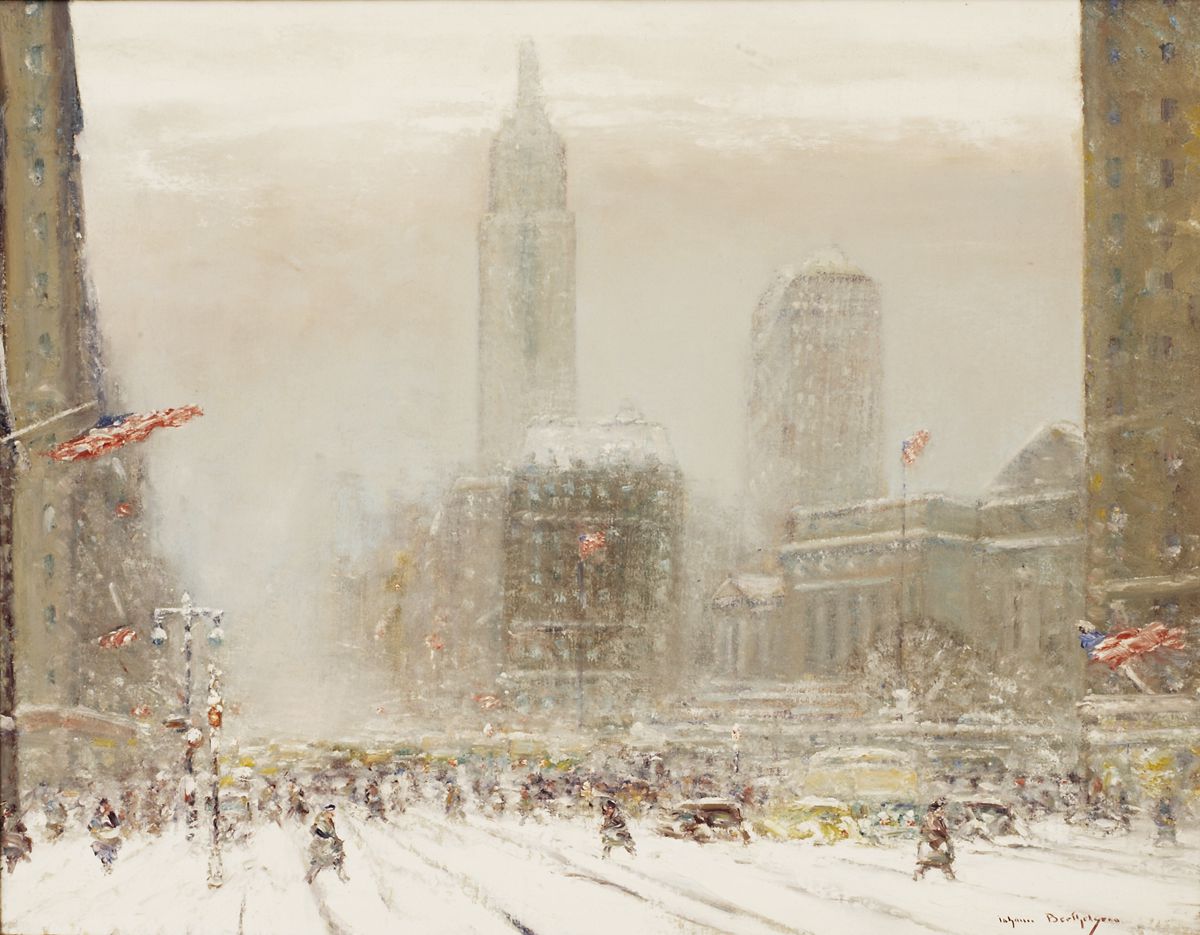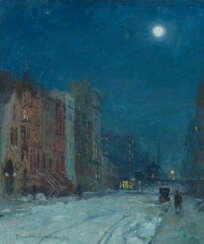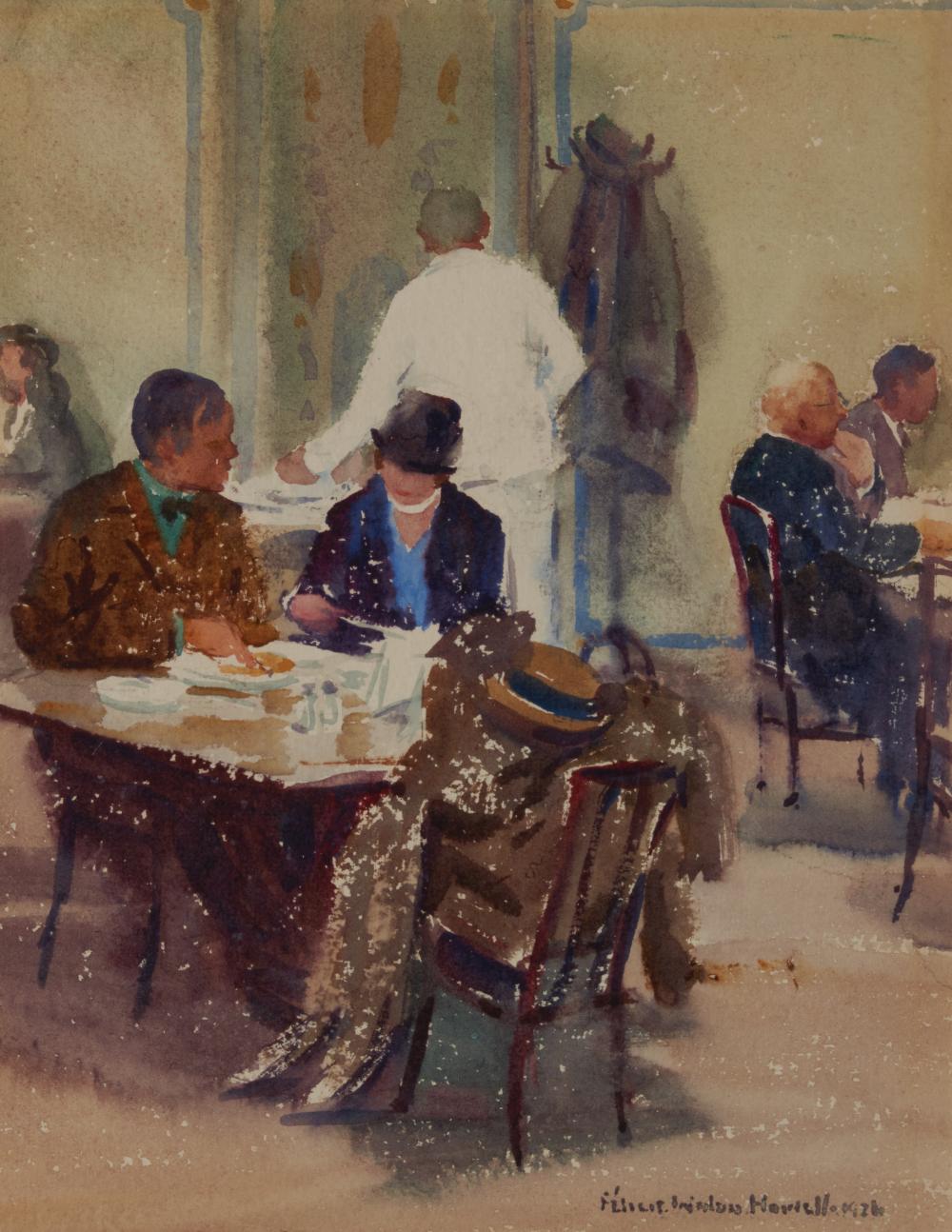
Paintings — American Atmosphere: An Important Private Collection
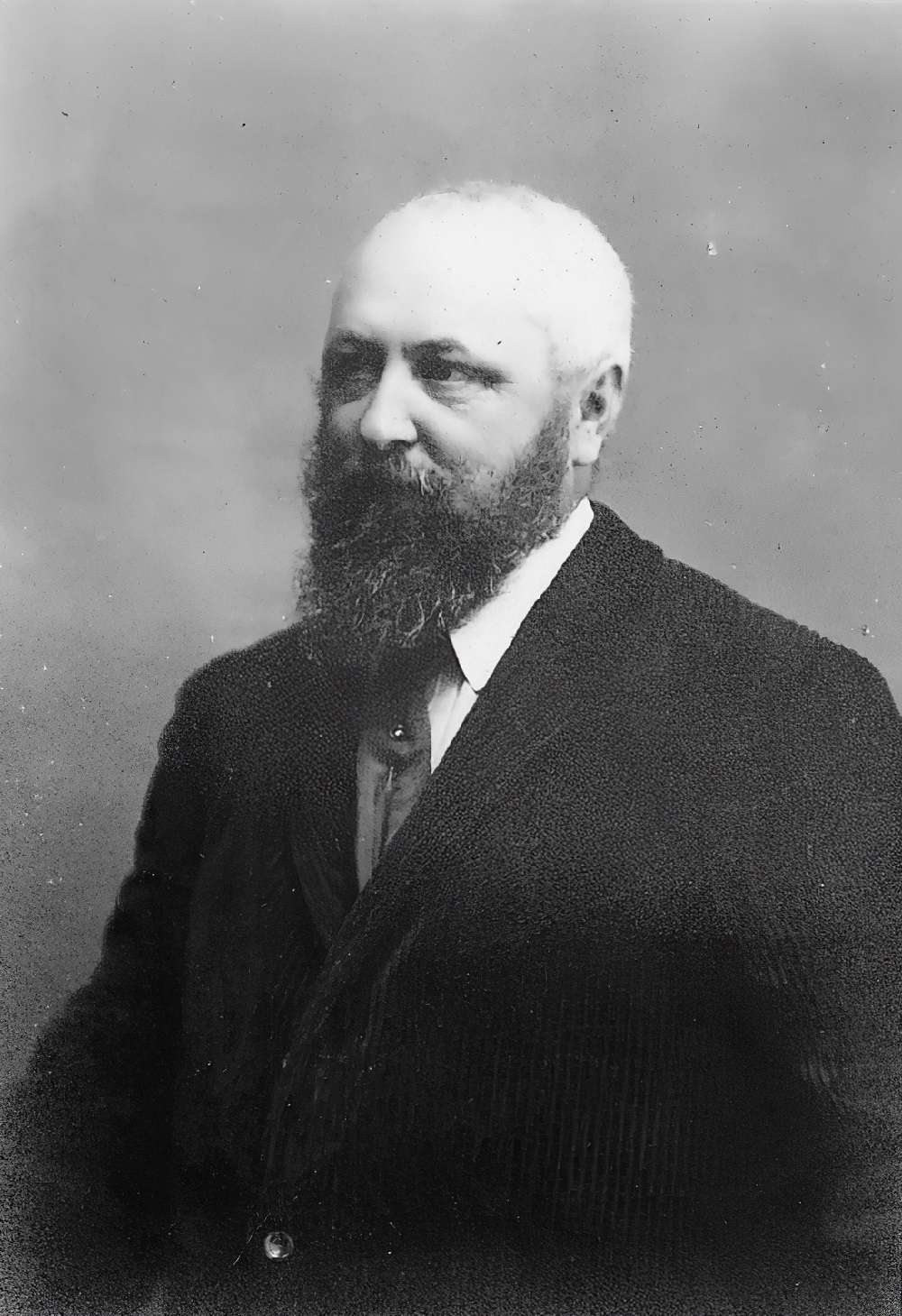
Theodore Butler was an American Impressionist painter who is best known for his depictions of the French countryside.
Butler studied at the Art Students League of New York and worked as an illustrator for publications such as Harper's Weekly and Scribner's Magazine. In 1887, he traveled to France to study at the Académie Julian in Paris. There, he met the Impressionist painter Claude Monet and became part of his inner circle of friends and collaborators. Butler eventually settled in the village of Giverny, where he lived for the rest of his life.
In Giverny, Butler painted landscapes and scenes of everyday life in the countryside, often featuring the gardens and water lilies made famous by Monet's own paintings. He developed a loose, painterly style that was influenced by the Impressionists but also showed the influence of Post-Impressionism.
Today, Butler's work can be found in the collections of museums such as the Metropolitan Museum of Art in New York City, the Musée d'Orsay in Paris, and the Art Institute of Chicago. His contributions to the development of Impressionism and his association with Monet continue to make him an important figure in the history of art.
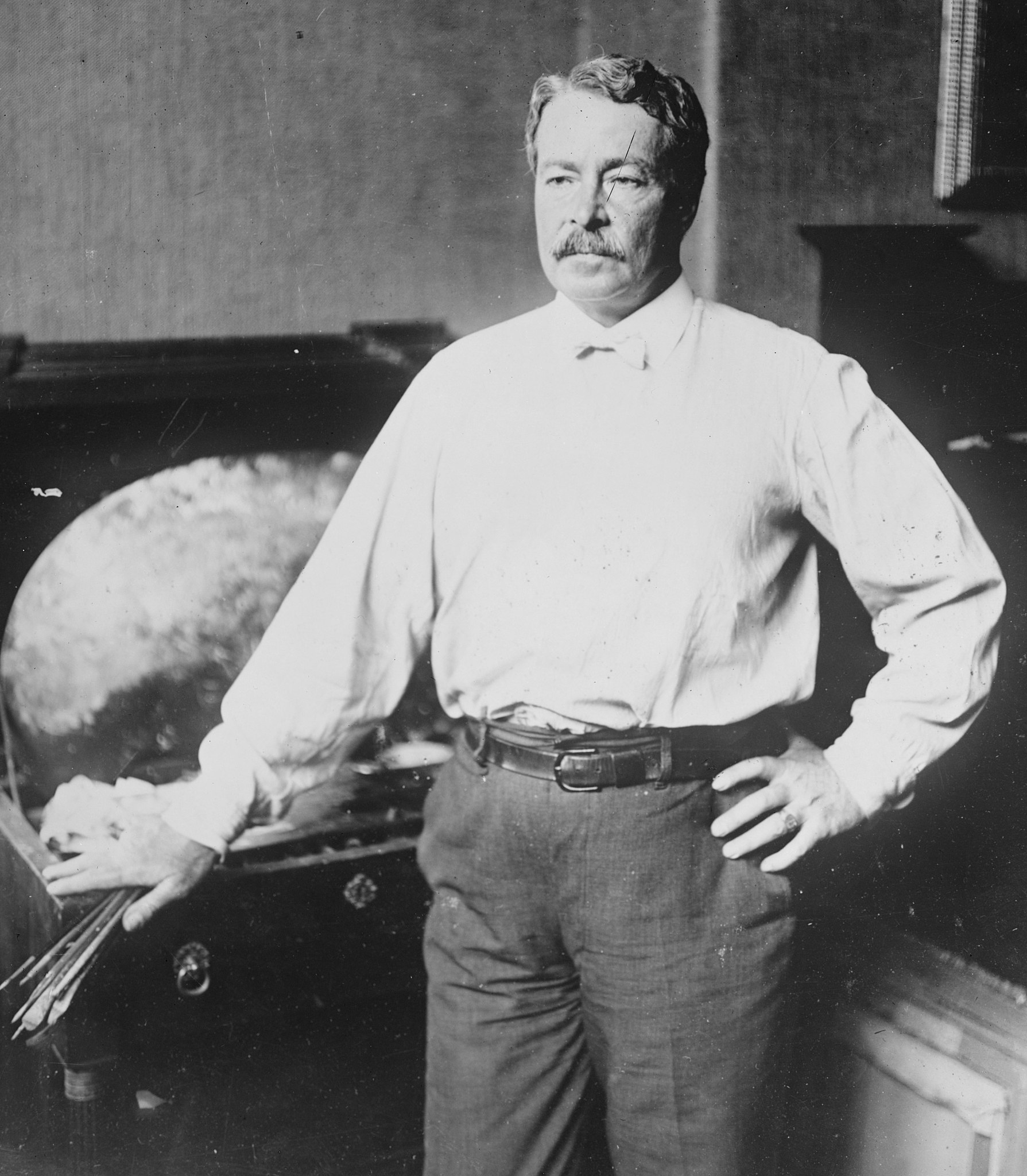
Frederick Childe Hassam was an American Impressionist painter, celebrated for his urban and coastal scenes. Born on October 17, 1859, in Dorchester, Massachusetts, Hassam was a pivotal figure in introducing French Impressionism to the American art scene. His prolific output includes over 3,000 works ranging from oils and watercolors to etchings and lithographs.
Hassam's technique was characterized by the use of light and vibrant colors, often focusing on bustling cityscapes and tranquil New England coastlines. He spent significant periods in Europe, particularly Paris, where he absorbed elements of the avant-garde styles of the time. Despite this, he often emphasized a connection to English landscape traditions over French ones.
Some of his most acclaimed works capture the essence of places like the Isles of Shoals in Maine and East Hampton in Long Island, where he later made his summer home. These settings often featured in his paintings, reflecting the picturesque and serene landscapes that contrasted with his urban subjects.
Hassam's legacy includes his influence on American collectors and institutions, helping to cultivate a taste for Impressionism in the United States. His works are held in major museums, including the Metropolitan Museum of Art and the Museum of Modern Art, ensuring his continued recognition as a key figure in American art history.
For those interested in exploring more about Hassam's life and works, signing up for updates on exhibitions and sales can provide valuable insights into his contributions to Impressionism. Subscribe for updates on new collections and auction events related to Frederick Childe Hassam's artworks.
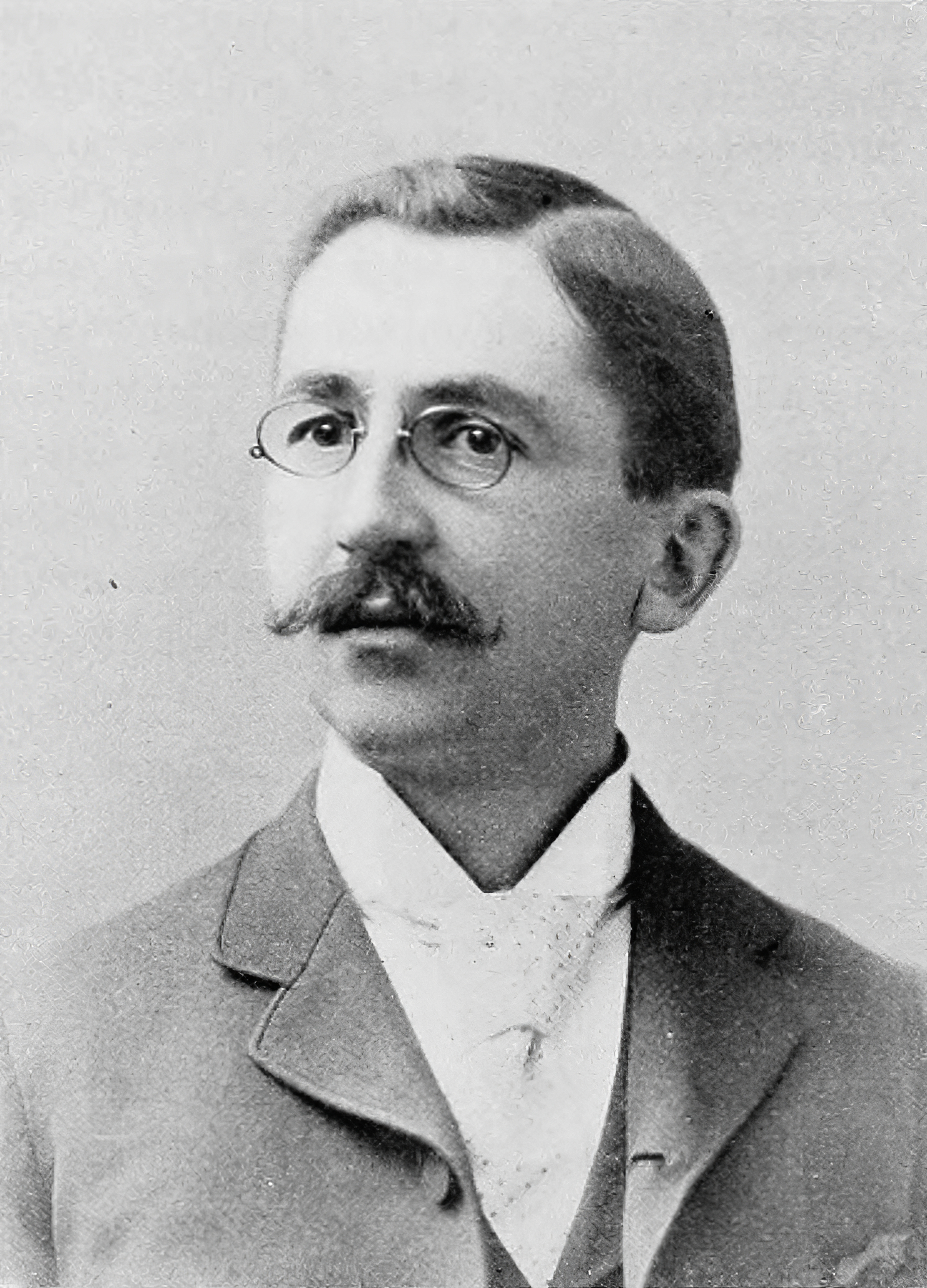
Abbott Fuller Graves was an American painter and illustrator who specialized in decorative open air garden paintings and floral still lifes. His use of thick brushstrokes, bright colors, and natural light shows the influence of European impressionism.

Abbott Fuller Graves was an American painter and illustrator who specialized in decorative open air garden paintings and floral still lifes. His use of thick brushstrokes, bright colors, and natural light shows the influence of European impressionism.
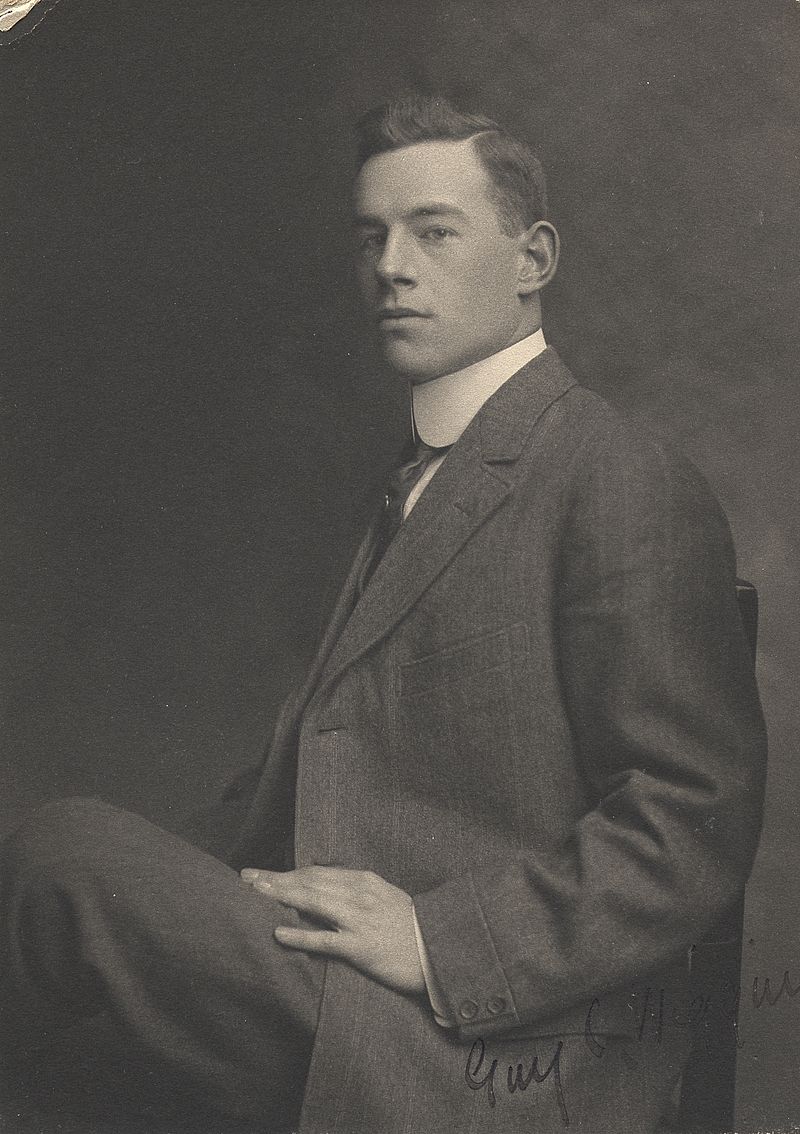
Guy Carleton Wiggins was an American artist known for his impressionistic winter landscapes, particularly those of New York City.
Wiggins began his artistic training at a young age and went on to study at the National Academy of Design and the Art Students League in New York City. He also studied in Europe, particularly in France, where he was heavily influenced by the Impressionist movement.
Wiggins is best known for his snowscapes, which often depict New York City streets, parks, and landmarks covered in snow. He used a technique of laying thick, impasto paint on the canvas, creating a sense of depth and texture in his paintings.
Wiggins was a prolific artist, producing over 3,000 works during his lifetime. He was a member of several art organizations, including the Salmagundi Club, the National Academy of Design, and the American Watercolor Society.
Today, his paintings can be found in numerous private and public collections, including the Metropolitan Museum of Art, the Smithsonian American Art Museum, and the White House.
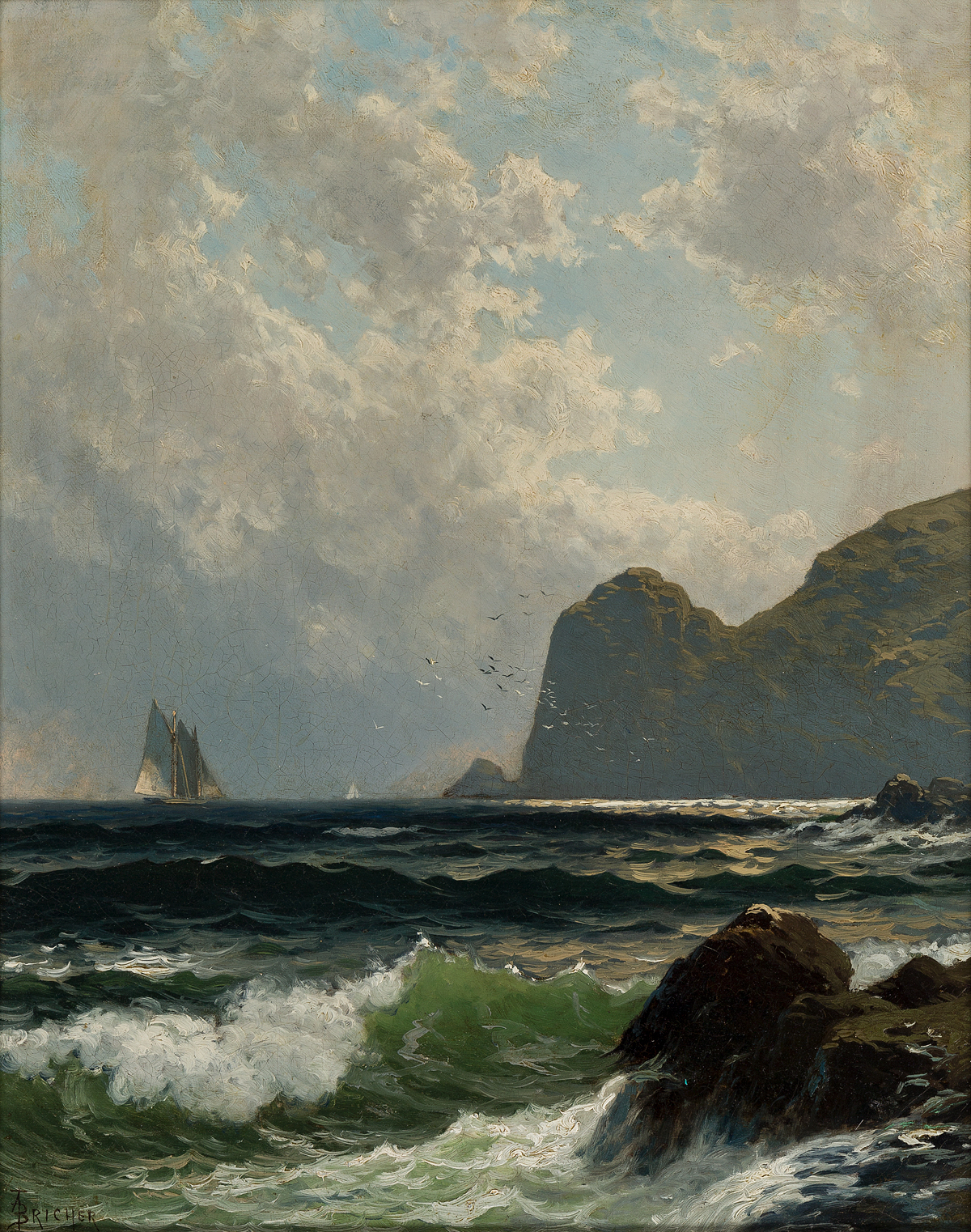
Alfred Thompson Bricher was a painter associated with White Mountain art and the Hudson River School.
In the 1870s, he primarily did maritime themed paintings, with attention to watercolor paintings of landscape, marine, and coastwise scenery. He often spent summers in Grand Manan, where he produced such notable works as Morning at Grand Manan (1878). In 1879, Bricher was elected into the National Academy of Design as an Associate member.
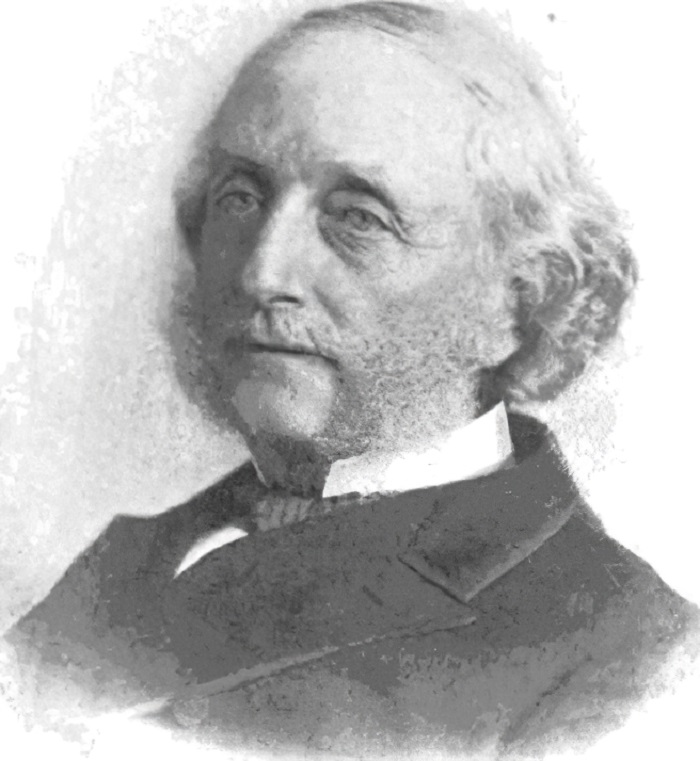
William Bradford was an American romanticist painter, photographer and explorer, originally from Fairhaven, Massachusetts, near New Bedford. His early work focused on portraits of the many ships in New Bedford Harbor. In 1858, his painting New Bedford Harbor at Sunset was included in Albert Bierstadt's landmark New Bedford Art Exhibition.
He is known for his paintings of ships and Arctic seascapes. He was one of the first American painters to portray the frozen regions of the north.
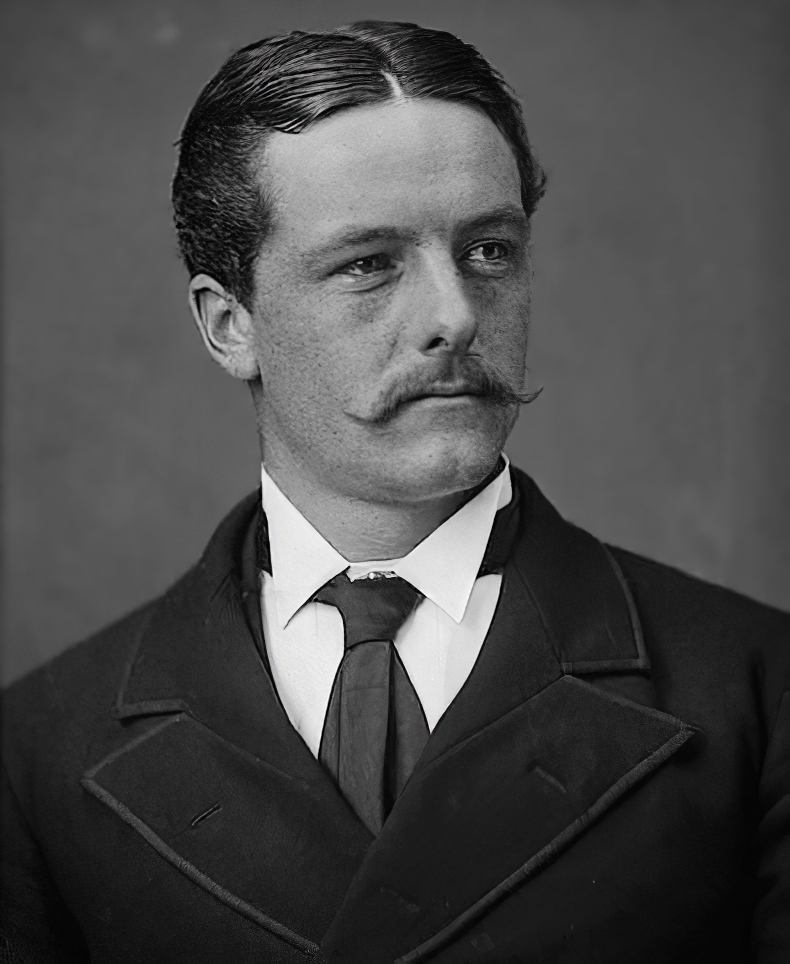
Francis Augustus Silva was an American Luminist painter of the Hudson River School. His specialty was marine scenes, particularly of the Atlantic coast, a genre in which he masterfully captured the subtle gradations of light in the coastal atmosphere. He focused on romantic scenes, avoiding depictions of seaside recreation, even when painting scenes at Coney Island, which was then already a popular recreational area.
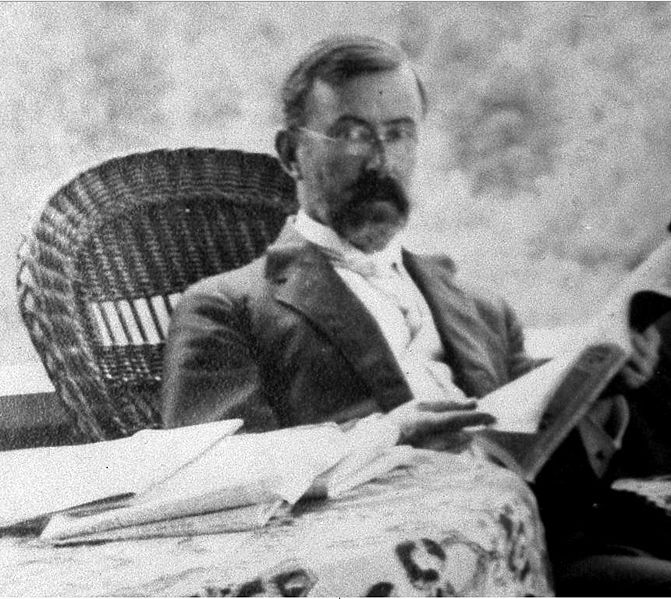
Charles Courtney Curran is an American impressionist painter.
He was educated at the National Academy of Design (New York), then studied at the Académie Julian in Paris.
Curran is known for his romantic depictions of young women in nature, where they are walking, playing sports or just admiring flowers. The artist also painted plein air, experimenting with a variety of artistic styles, including Impressionism, Symbolism, Tonalism and Naturalism.
